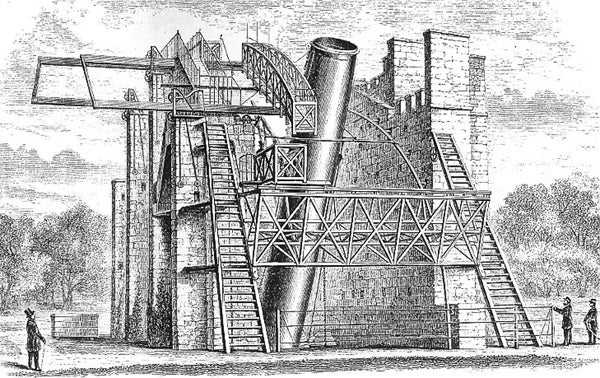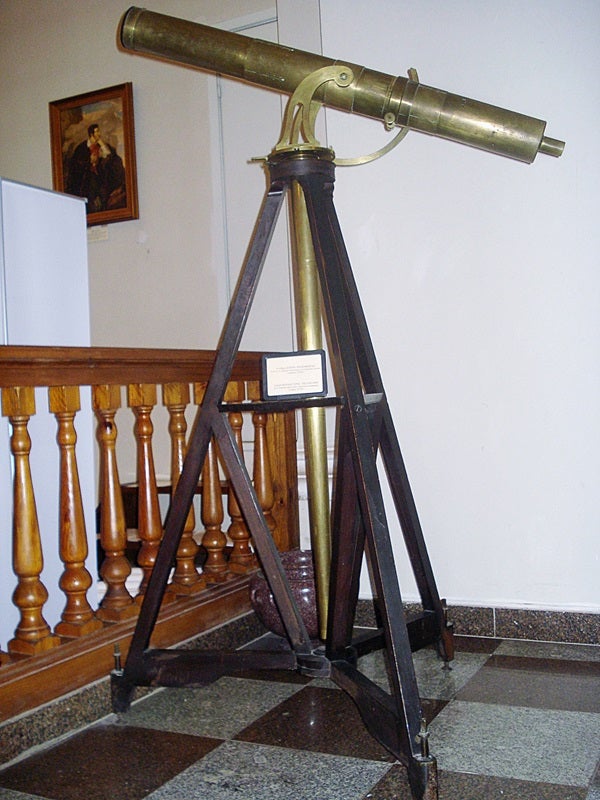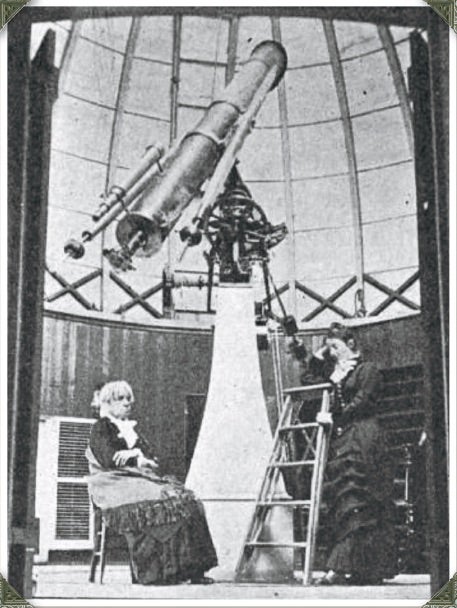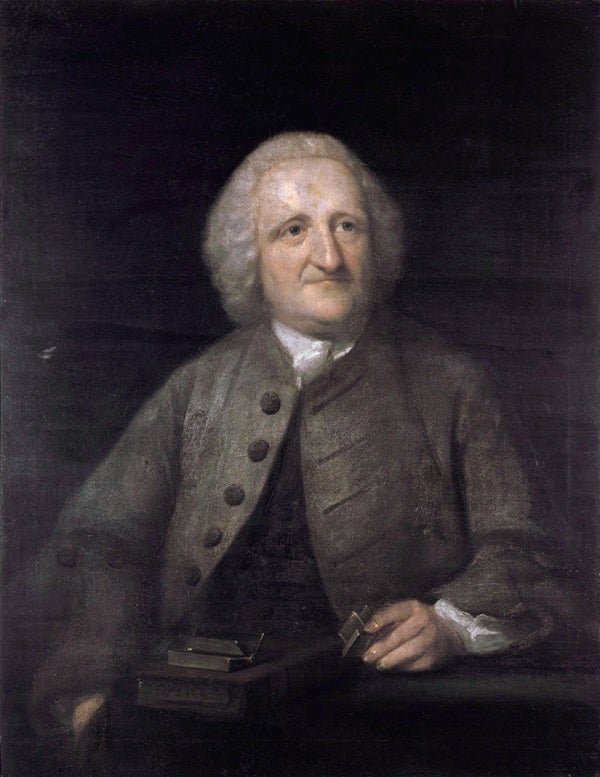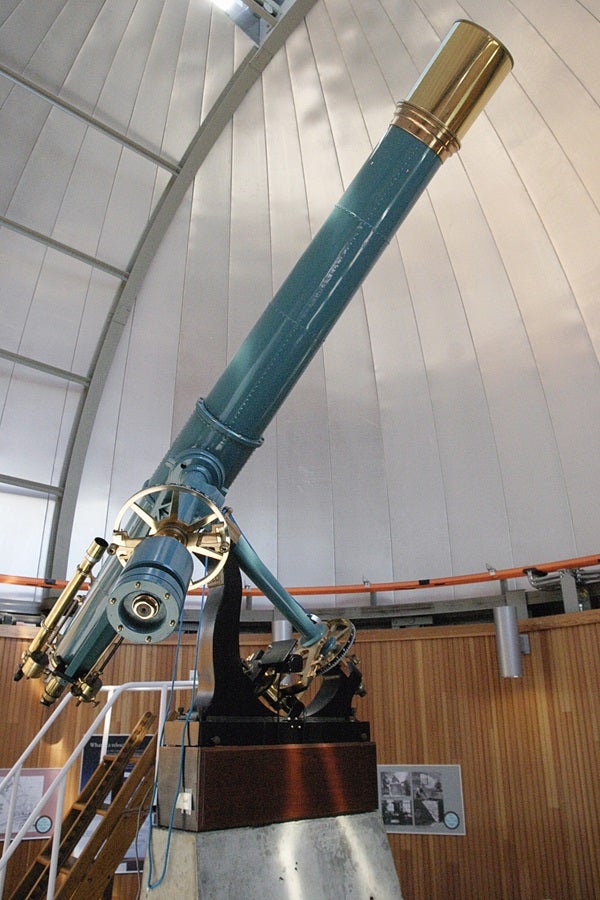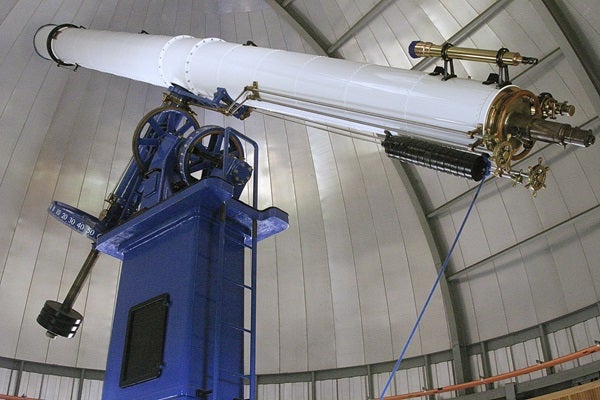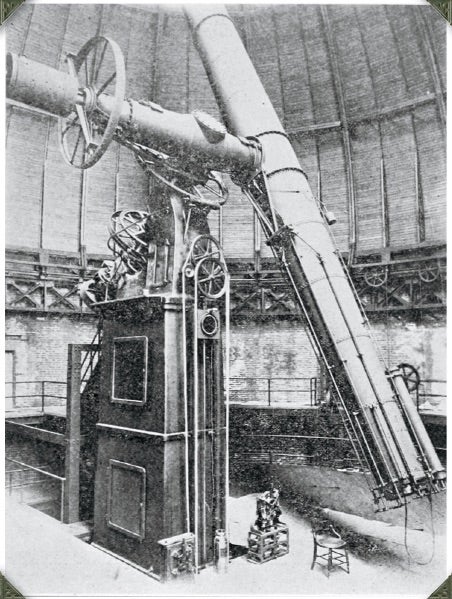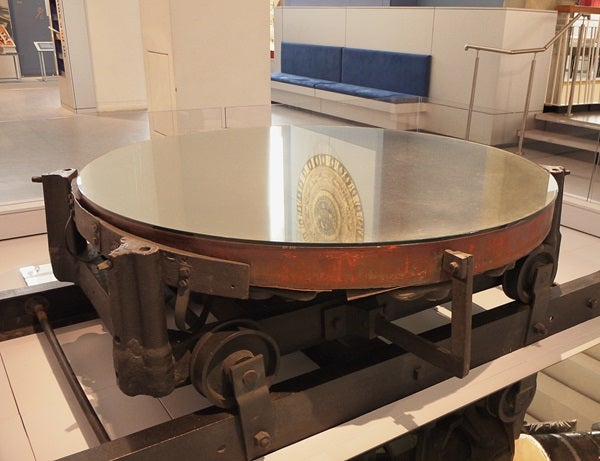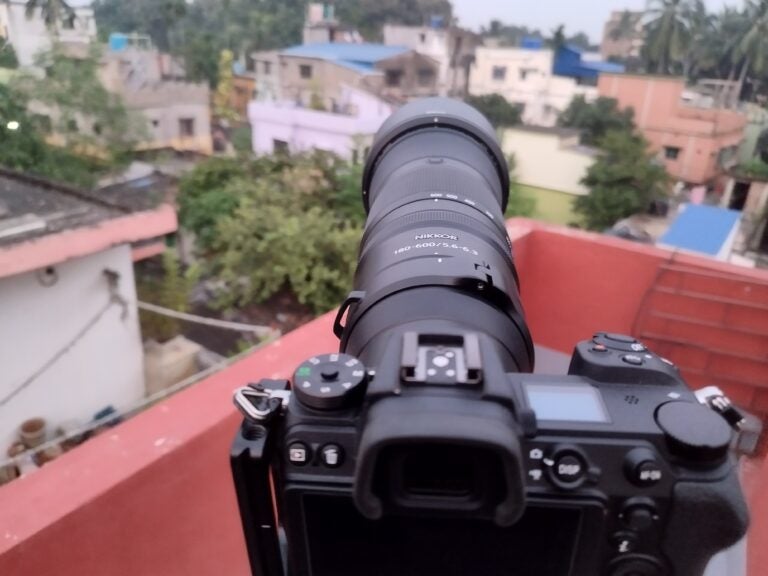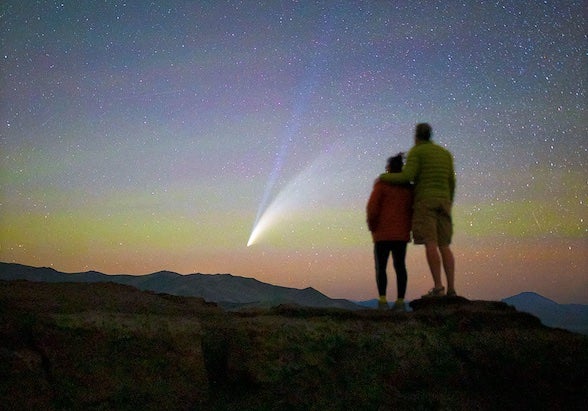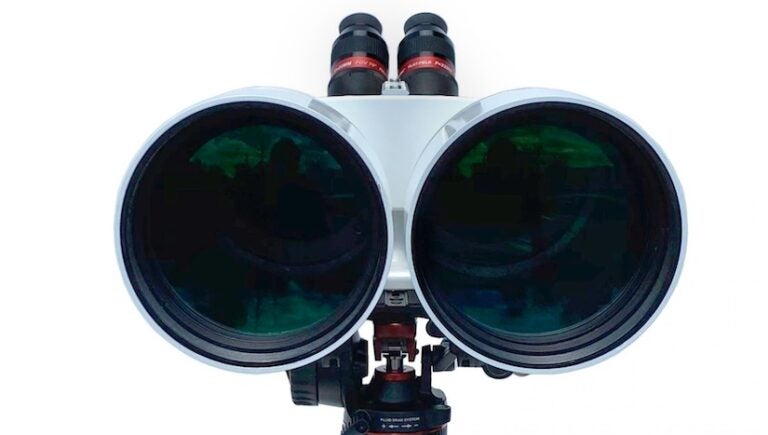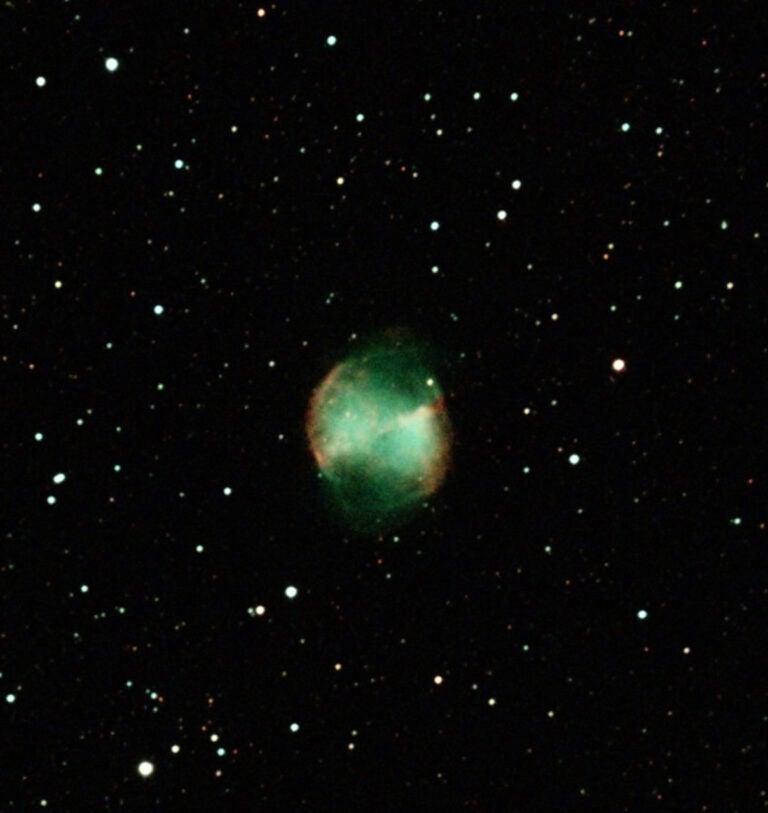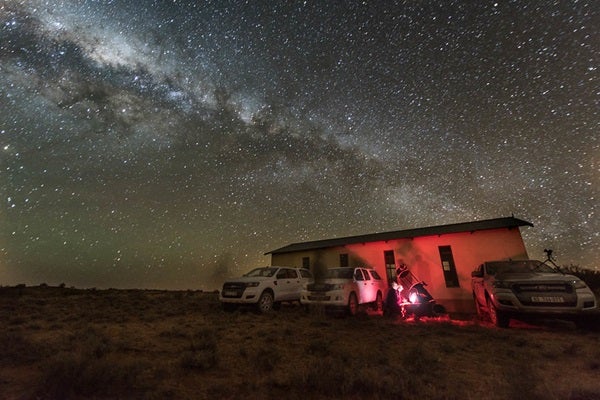Still, a few individuals — like Sir William Herschel in England — built and sold reflectors. Let’s introduce you to a few of the best-known telescope-makers of the past. By getting to know them a bit, you’ll have a better understanding of how today’s telescopes evolved and why astronomers chose them to help us all understand the cosmos.
Besides Herschel, the most famous English optician of the day was John Dollond. He determined specific glass types and combinations that improved the refractor, and he was awarded a patent for this work. The resulting “achromatic” refractor combined lenses made from crown and flint glass, which reduced the color fringing so apparent in earlier instruments.
Dollond’s company began commercial production of achromats in 1758. In 1763, his son, Peter, who took the reins of the company after his father’s death, improved on the optical design by adding a third lens to the objective. The company innovatively marketed it as a “triple achromat,” but, in fact, this was the first apochromatic lens. Such an optic makes color fringing virtually undetectable.
Under the terms of Dollond’s patent, only his company could commercially make achromatic refractors. With the patent expiration in 1772, other companies came on the scene, producing achromatic refractors at more reasonable prices.
Across the Atlantic, Henry Fitz became one of the first American commercial telescope-makers. He constructed a high-quality 6-inch refractor in 1845. With the money he earned giving public star parties, he started a telescope-making business. Fitz’s firm sold refractors from 1848 into the 1860s, even a few after his death in 1863. Astronomers considered these instruments some of the best available. The lenses compared favorably with those being made in Europe at the time, which makes sense because Fitz learned his techniques there.
From 1840 to 1855, Fitz made 80 percent of all astronomical telescopes sold in the United States. His smaller refractors (those with lenses 4 inches in diameter or less) characteristically had beautiful wooden tubes and are today considered highly desirable and collectible.
But Fitz also made a number of then-large refractors — a total of 30 with lenses 6 to 16 inches in diameter. Some of his better-known ones include a 63/8-inch for South Carolina College in Columbia in 1851; a 9¾-inch for West Point in 1856; and a 13-inch for the Allegheny Telescope Association in Pittsburgh in 1861.
That 13-inch refractor at the Allegheny Observatory has an interesting story. In 1872, someone stole the objective from the telescope, which was then the main instrument at the Allegheny Observatory. The thief then informed the facility that the lens was being held for ransom. Samuel Pierpont Langley, the facility’s first director, was unsuccessful in negotiating the return of the objective.
Artists in optics
In 1846, a few years after Fitz established his firm, Alvan Clark established Alvan Clark & Sons in Cambridgeport, Massachusetts. As the company name implied, his two sons, George Bassett Clark and Alvan Graham Clark, joined him in the endeavor. By far, the Clarks rank as the most famous American telescope-makers. Often referred to as “artists in optics,” the Clarks produced high-quality refractors in a variety of sizes sought by professionals and amateurs alike.
Not only were the optics excellent, the mount and optical tube assembly were outstanding, demonstrating some of the finest craftsmanship of the era. The Clarks were called upon numerous times to build larger telescopes. Five times the firm constructed the world’s largest refractor. This culminated in the design and construction of what is still the largest refractor: the 40-inch at Yerkes Observatory in Williams Bay, Wisconsin.
Another tale involves wealthy Bostonian Percival Lowell, whose interest in astronomy, and in particular Mars, led him to Flagstaff, Arizona, where he constructed an observatory in 1894. The 24-inch Clark refractor, still in use for public observing, was the main instrument Lowell and his staff used to study their primary target, Mars.
Lowell’s focus was primarily on the martian “canals,” of which he and others produced many sketches over the years. And when you visit Lowell Observatory, you will see not only a historic telescope, but also a reminder of Percival Lowell himself: His mausoleum stands only a short distance from the 24-inch refractor.
Another Clark refractor, this one a 20-inch on a mount built by German-born American inventor George N. Saegmuller, also had first light in 1894. Denver University’s Chamberlain Observatory is still in operation, having undergone a major renovation in 2008. Members of the Denver Astronomical Society operate the scope for public outreach events.
The crowning achievement of Alvan Clark & Sons is the 40-inch at Yerkes Observatory. Yerkes was founded in 1897 by astronomer George Ellery Hale and financed by entrepreneur Charles Yerkes. Hale, at the start of his quest for larger and larger telescopes, established Yerkes as a part of the University of Chicago. Astronomers conducted significant research there over the years, and today the observatory is known for its formal and informal science education and outreach.
As the 20th century dawned, other telescope-makers started coming onto the scene, most notably John Brashear. Though he became interested in astronomy as a child while looking through a telescope at the Moon and Saturn, Brashear started his career as an accomplished machinist. He could not afford to purchase a telescope, so he made his own, thus starting him on the way to establishing the John A. Brashear Company.
Beginning around 1880, Uncle John, as he was called, became prominent in the manufacture of not only telescopes, but also other instruments. His experimentation also led to the development of a new coating method for depositing silver on glass, the prevailing technique until the implementation of the vacuum-coating process in 1932.
Among Brashear’s other scopes is the 30-inch Thaw refractor at the Allegheny Observatory, which was completed around 1914, is still in use. The 20-inch Brashear refractor on a Warner & Swasey mount, originally installed in 1914, is the centerpiece at the Chabot Space & Science Center in Oakland, California. “Rachel,” as the telescope is called, was refurbished in 2000 and moved to a better location.
Other great refractors dominated during this era, and each improved the technology. They included the Royal Greenwich Observatory’s 28-inch Grubb refractor, which began operating in 1893; 32.7-inch and 24.4-inch refractors at the Paris Observatory (1891); and 31.5-inch and 19.7-inch refractors at the Astrophysical Observatory in Potsdam, Germany (1899).
During the era of the great refractors, designers and engineers were making slow but steady advances in techniques to build big reflecting telescopes. The main issue was the primary mirrors, which were made from speculum metal, a mixture of copper and tin with an abysmal reflectivity around 68 percent. Speculum mirrors also needed to be repolished and refigured every few months because they tarnished in the open air, further reducing reflectivity.
Perhaps the two most famous of the great speculum-mirror reflectors were those of Sir William Herschel and William Parsons. Herschel’s “40-foot telescope,” a 49.5-inch reflector, saw first light in 1787. Truly a giant of the time, it let Herschel make numerous previously impossible observations. Records show it was difficult to use, however, and the weather rarely permitted good seeing. It saw last light in 1815.
The “Leviathan of Parsonstown” in Parsonstown, Ireland, was a reflector with a 72-inch speculum mirror telescope made by William Parsons, third Earl of Rosse. It saw first light in 1845 and was the largest telescope in the world until the Mount Wilson 100-inch Hooker Telescope opened in 1917. In the 1870s, J. L. E. Dreyer observed through the telescope to research objects in his New General Catalogue of Nebulae and Clusters of Stars. Workers began to dismantle the Leviathan in 1908. In 1914, they moved one of the two main mirrors Parsons cast to the Science Museum in London.
Hale selected Mount Wilson, a 5,710-foot-high (1,740 meters) peak in the San Gabriel Mountains, northeast of Los Angeles. The site remains a high-quality one today because of its steady airflow. The 60-inch, with its silvered surface, saw first light in 1908. The Hale Telescope (with an aluminum coating on the mirror) is still in use today for public outreach.
Yet Hale was already thinking ahead to an even larger telescope. He persuaded elevator magnate John Hooker to pay for the mirror and Andrew Carnegie to fund the observatory and telescope. Saint-Gobain was again selected, this time to provide a 100-inch mirror blank, which turned out to be no easy task.
The Hooker 100-inch went into operation in late 1917, and it was the primary telescope for a number of important advances, such as Edwin Hubble’s recognition in 1923 that Andromeda was a galaxy and not a nebula, and Hubble and Milton Humason’s 1929 discovery that the universe is expanding and measurement of the rate of that expansion. Like the Hale 60-inch, the Hooker 100-inch is now dedicated to public use.
Hale was still thinking ahead, however, and he would again lead the effort to build another record-shattering telescope, the fourth of his career. Hale wrote an article for the April 1928 issue of Harper’s Magazine entitled “The Possibilities of Large Telescopes.” This was the jump-start for the 200-inch Hale reflector on Palomar Mountain in San Diego County, California.
Through the California Institute of Technology and with funding from the Rockefeller Foundation, work began in 1928 on the mirror, telescope, and observatory. The low-expansion Pyrex mirror blank, made by Corning Glass Works, was far superior to the plate glass one used for the 100-inch telescope.
Unfortunately, Hale died in 1938, prior to the completion of the 200-inch. Yet work continued, though slowed by several challenges and in particular the war efforts of World War II. Finally, on January 26, 1949, Hubble was given the honor of taking the first photograph.
Many large reflectors followed, the first being the Soviet Union’s Large Altazimuth Telescope in 1975. And larger, more-complex telescopes dot the astronomical landscape today, including the behemoth 409-inch Gran Telescopio Canarias and, of course, space-based telescopes like Hubble and — hopefully in 2018 — the James Webb Space Telescope.
As telescopes become bigger and more sophisticated, we owe a tip of the hat to pioneers like Henry Fitz, Alvan Clark, John Brashear, and George Ellery Hale. They, and others like them, opened up more of the universe for us to explore.

